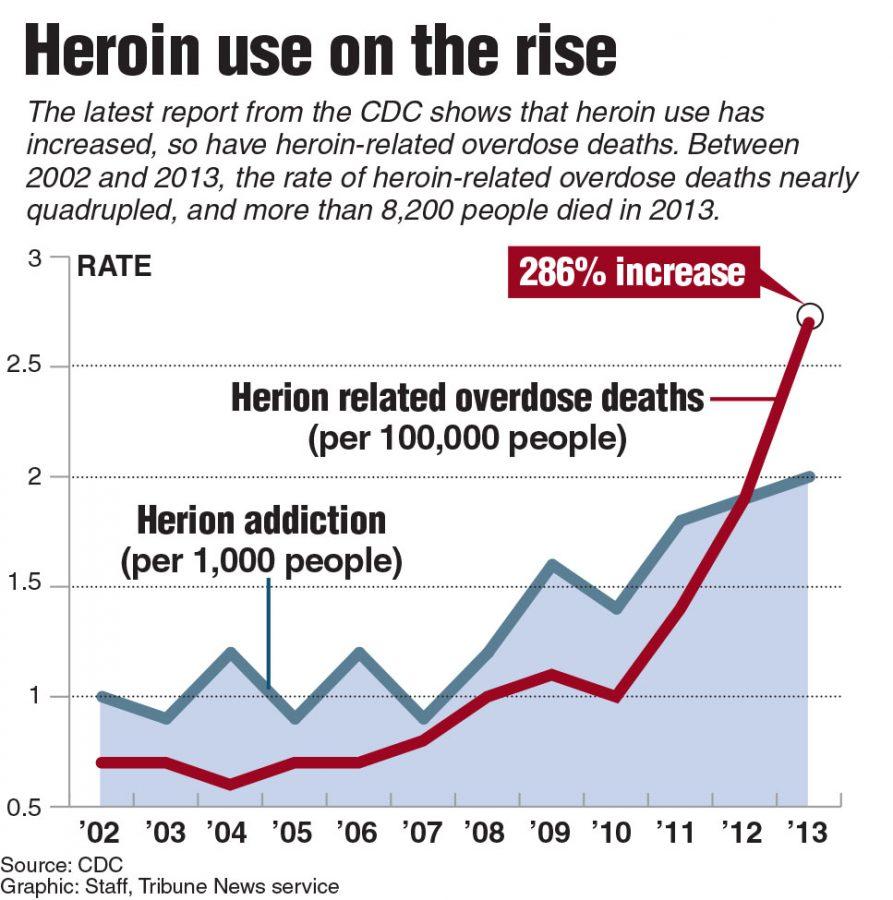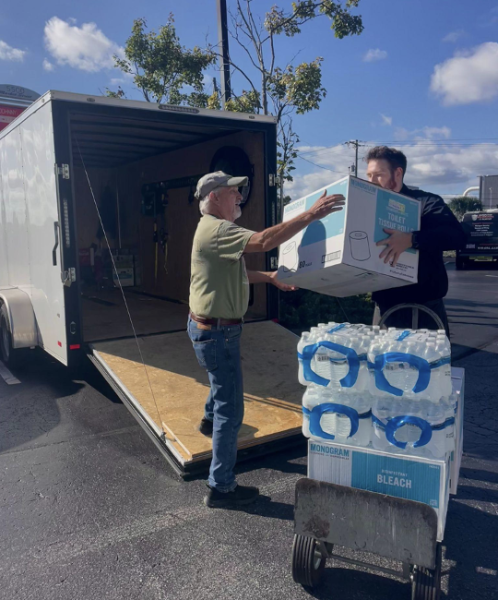The Wilmington Heroin Epidemic: Solved?
Recent polls regarding heroin and opioid abuse have revealed a spike in activity for the Wilmington area, which has incited alarm in local police officials and psychological health professionals.
Deaths by heroin overdose have skyrocketed in recent years and have struck an emotional chord that has reverberated throughout the Wilmington community. Both law enforcement and health field officials have grappled with the issue of heroin and opioid dependency, and have provided insight as to why the drug remains such a powerful influence. Possible solutions, such as incentive programs, were discussed, and it was concluded that a multifaceted approach should be utilized in order to mitigate the harrowing growth of heroin abusers.
“Southeastern North Carolina has the highest proportion of individuals that are opioid dependent,” said Dr. Lee Jackson, a UNC Wilmington psychology professor. This was based on a nationwide scale. “It is an issue that impacts every part of society.”
“Heroin in Wilmington is really just crazy,” said Cathryn Lindsay, Assistant to the Public Information Officer for the Wilmington Police Department. “We have one of the worst epidemics in the entire country.”
The issue has been described as an age-old problem since the opening of I-40. “It is a major east-west pipeline that stops in Wilmington,” said Sgt. Andrew Swenson, a police official for the Wilmington Police Department. “That is part of the issue. Another problem is the Wilmington Treatment Center. It is usually an outpatient type healthcare system, and while the facility is of quality, drug abusers are in treatment no longer than it takes to build connections with other users. That just increases the ease of accessibility.”
Another contributing factor to the heroin epidemic is doctors overprescribing opioid medications.
“During the 1990’s, physicians began to prescribe opioid drugs at a much higher rate,” said Dr. Jackson. “As time passed, and there were crack downs on the availability of prescriptions, people turned to heroin as it was relatively cheap.”
In an article by Paul Stephen of the Wilmington Star News, a report titled, “The Opioid Crisis in America’s Workforce,” found that more than half, approximately 53.8 percent of all opioid prescriptions in the city were abused. The same source found that opioid abuse rates range from 11.6 percent of the individuals in Wilmington, N.C.
Heroin becomes a viable drug source once opioid drug prescriptions have run their course. Heroin is inexpensive and easy to come by.
A report by Jonathan Rodriguez published in March of 2016 stated that the number of people dying just from heroin use had jumped up 584 percent.
A poll from the National Institute of Drug Abuse, which was revised just over a month ago, illustrated the exponential spike in heroin deaths across the United States. A bar graph depicting the total U.S. overdose deaths involving heroin from 2002 to 2015, showed that there was a 6.2-fold increase.
With the heroin abuse and death rates on the rise, law enforcement and the health care reps have taken serious consideration as to what type of program would best tackle the issue.
Dr. Wendy Donlin Washington, undergraduate & associate professor at UNCW, introduced the idea of a harm reduction approach.
“Until we have a perfect system where we can treat everyone who wants to be treated and prevent them from getting the drugs in the first place, we have to treat this problem as ‘how can we minimize the harm that is done,’” said Donlin. “I think that needle exchanges are good because they reduce the amount of STDs and HIV being spread. Any time we can reduce the harm, we should.”
Laura Midget, a local woman whose son is a regular heroin user, gave her opinion on needle exchanges.
“My son has Hepatitis C, so I definitely agree with it,” said Midget. “People are going to do it no matter what.”
The main problem surrounding the issue is the incentive to quit. Is there one?
Dr. Donlin discussed her role at a hospital in Baltimore. She actively worked with hired cocaine and heroin abusers in the Baltimore area, and the hospital had an incentive program for these individuals. Essentially, every day that they came into work clean, their wage increased, thus increasing their incentive to quit and live with a greater purpose.
“I don’t think the punishment should be worse than what you are punishing them for,” said Donlin. “When you put someone in jail, you strip away their opportunity for a better future.”
“It has to be a multifaceted approach,” said Lindsay. “It has to be criminal justice, local health care, and it’s got to be local elected officials that are pushing for a change.”
A report from the Office of National Drug Control Policy estimated that there are approximately 1.5 million chronic users of heroin in the U.S., according to Michael’s House, a heroin treatment facility.
Heroin is an opiate pain-relieving substance that can produce feelings of euphoria in users. It is the result of processed morphine, which stems from the opium poppy. The drug is typically brown or white tinted, dependent on the location in which the drug was transported from. Heroin has been notorious for being highly addictive and abused.












